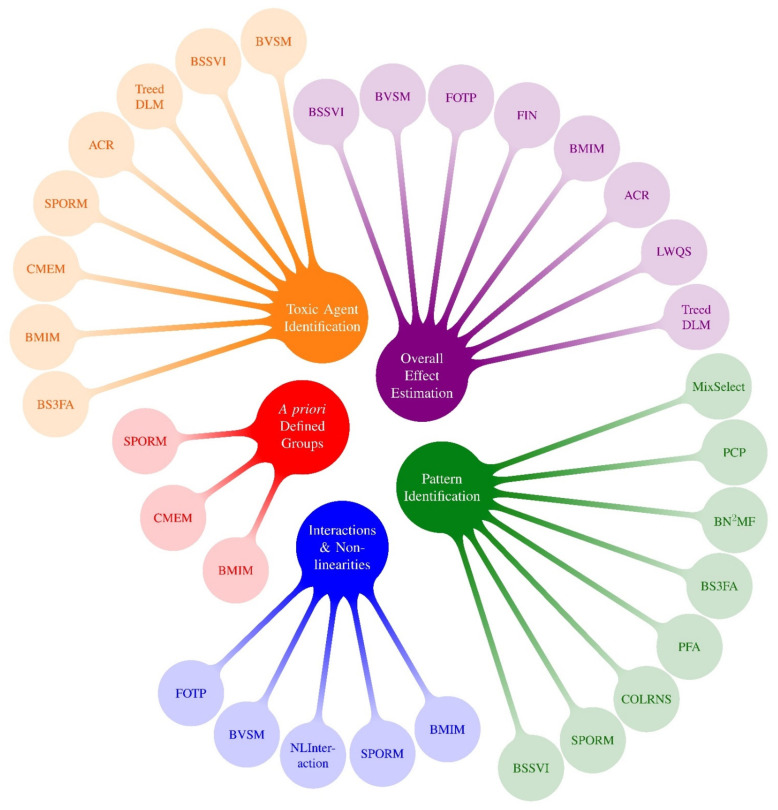Figure 2.
Mixtures Methods x Research Questions 1: Highlighted Methods from PRIME. 1 Research questions following Gibson et al., 2019 review: (1) Overall effect estimation: What is the overall effect of the mixture and what is the magnitude of association? (2) Toxic agent identification: Which congeners or chemicals are associated with the outcome? What congeners/chemicals are most important? (3) Pattern identification: Are there specific exposure patterns in the data? These can be managed with clustering and dimension reduction methods. (4) A priori defined groups: What are the associations between an outcome and a priori defined groups of exposures? (5) Interactions and non-linearities: Are there interactions between exposures? Is the exposure-response surface non-linear? (6) Exposure-response relationship: What is the exposure-response relationship between each chemical and the outcome? Because almost all methods that investigate interactions also characterize potentially nonlinear exposure-response functions, we group questions #5 and #6 into a single bubble in this figure.

